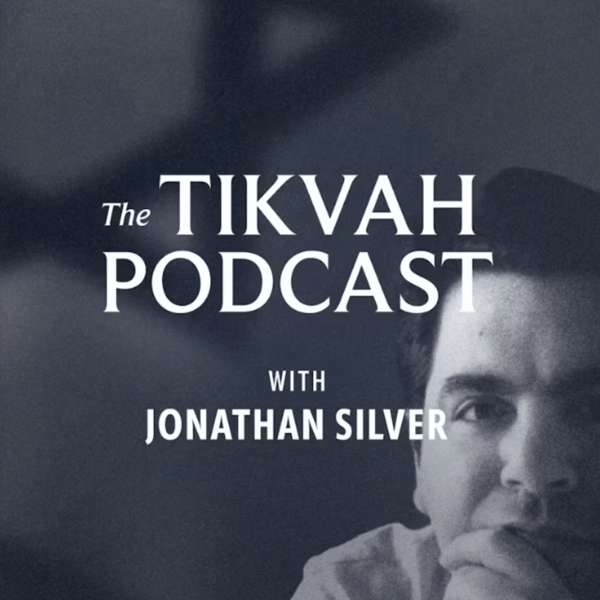Mark Cohn on the Reform Movement and Intermarriage
The Tikvah Podcast
Tikvah
4.6 • 620 Ratings
🗓️ 5 July 2024
⏱️ 49 minutes
🧾️ Download transcript
Summary
For years, the Reform movement in America has allowed marriage between a Jewish and non-Jewish spouse, as long as the couple commits to raising their children as Jews. But a cultural taboo against intermarriage remained for Reform clergy, a taboo reinforced by admissions and ordination standards at the Hebrew Union College, the movement’s main seminary. Applicants who were in a long-term relationship with a non-Jewish partner were denied, on the grounds that modeling a Jewish home was expected of rabbis.
That changed this year. “Moving forward,” a recent letter from the president, provost, and board chair of the seminary announced, “the religious identity of a student’s or applicant’s partner will no longer disqualify students for admission or ordination.” The letter goes on to explain that this decision is the result of a process of internal deliberation, and that it brings what’s expected of the clergy in line with the reality of the broader Reform community.
In reaction, the longtime Reform rabbi Mark Cohn took to the Times of Israel with an article, called “The Anguished Dilemma of a Reform Rabbi,” lamenting the decision. In today’s conversation, Cohn joins Jonathan Silver to discuss the Reform movement’s attitude toward interfaith couples, the relation between clergy and congregation, the purpose and nature of religious leadership, and in this case, who is leading whom, why this decision was made, and what it could mean for the future of Reform clergy in America.
Musical selections in this podcast are drawn from the Quintet for Clarinet and Strings, op. 31a, composed by Paul Ben-Haim and performed by the ARC Ensemble.
Transcript
Click on a timestamp to play from that location
| 0:00.0 | Established in 1875, the Hebrew Union College is the main seminary for Jewish clergy in the |
| 0:13.9 | Reform Movement in the United States. To this day, virtually every reform rabbi or canter |
| 0:19.4 | working in America was ordained by its faculty. |
| 0:22.7 | One of the core distinctions of the reform movement is that it is an expression of Jewish communal |
| 0:28.1 | life that does not feel itself bound by the Jewish tradition or the commandedness of Jewish law, |
| 0:33.9 | and it's for that reason that traditional communities tend to regard the reform community |
| 0:38.8 | with skepticism and at times contempt. One effect of downgrading the halakhic process of Jewish |
| 0:46.2 | communal reform and the binding nature of halakhic consensus is that the reform movement |
| 0:51.4 | has different standards of membership than traditional communities do. |
| 0:55.8 | In brief, traditional Jewish communities do not accept children born to Jewish fathers and non-Jewish mothers as Jews |
| 1:03.5 | unless the children are converted under appropriate rabbinic oversight and through the appropriate halakhic process. |
| 1:10.5 | But the reform movement does |
| 1:12.0 | consider children to be Jewish, as long as either parent, mother or father, is Jewish. This is what's |
| 1:18.4 | known as patrilineal descent, which is accepted in the reform movement along with matrilineal |
| 1:24.0 | descent. Either one counts. Now, there's an important consequence that follows from this. The acceptance of patrilineal descent. Either one counts. Now, there's an important consequence that follows from this. |
| 1:30.3 | The acceptance of patrilineal descent means that in the reform movement, there's practically |
| 1:35.7 | no reason to oppose marriage between a Jewish and non-Jewish spouse, as long as the couple |
| 1:41.1 | commits to raising their children as Jews. And indeed, reform clergy have |
| 1:45.7 | been officiating at weddings between Jews and non-Jews for decades now. Now, I realize that this |
| 1:51.7 | seems from a more traditional point of view to be incoherent and bizarre, but this line of |
| 1:57.3 | reasoning actually tracks with a traditional way of thinking about the purpose of marriage. |
| 2:02.9 | The joining of husband and wife establishes a family and a home, which points toward children |
... |
Please login to see the full transcript.
Disclaimer: The podcast and artwork embedded on this page are from Tikvah, and are the property of its owner and not affiliated with or endorsed by Tapesearch.
Generated transcripts are the property of Tikvah and are distributed freely under the Fair Use doctrine. Transcripts generated by Tapesearch are not guaranteed to be accurate.
Copyright © Tapesearch 2025.

